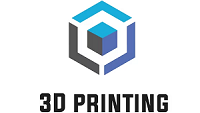
Navigating 3D Printing Materials: A Comprehensive Workshop
Introduction
3D printing has revolutionized the manufacturing industry, allowing for the creation of complex and customized objects with ease. However, with the wide range of materials available for 3D printing, it can be overwhelming to choose the right one for your project. That’s where our comprehensive workshop on navigating 3D printing materials comes in.
In this workshop, we will guide you through the various types of materials commonly used in 3D printing, their properties, and their applications. Whether you are a beginner or an experienced 3D printing enthusiast, this workshop will provide you with the knowledge and tools to make informed decisions when selecting materials for your projects.
Understanding the World of 3D Printing
3D printing has revolutionized the manufacturing industry, allowing for the creation of complex objects with ease. One of the key factors that determine the success of a 3D printing project is the choice of materials. In this comprehensive workshop, we will explore the various materials used in 3D printing and how to navigate through them effectively.
PLA (Polylactic Acid)
PLA is one of the most commonly used materials in 3D printing. It is derived from renewable resources such as cornstarch or sugarcane and is biodegradable. PLA is easy to print with and offers good strength and surface finish. However, it is not suitable for high-temperature applications.
ABS (Acrylonitrile Butadiene Styrene)
ABS is a popular choice for 3D printing due to its durability and impact resistance. It can withstand higher temperatures compared to PLA, making it suitable for functional parts. However, ABS emits fumes during printing, so proper ventilation is necessary.
PETG (Polyethylene Terephthalate Glycol)

PETG is a versatile material that combines the best properties of PLA and ABS. It offers good strength, flexibility, and chemical resistance. PETG is also transparent, making it ideal for applications that require clarity. It is easy to print with and has low warping tendencies.
Nylon
Nylon is a strong and durable material used in various industries. It has excellent mechanical properties, including high tensile strength and impact resistance. Nylon is suitable for functional prototypes and end-use parts. However, it requires careful handling and may require a heated print bed.
TPU (Thermoplastic Polyurethane)
TPU is a flexible filament that is resistant to abrasion, oil, and grease. It is commonly used for creating objects that require elasticity, such as phone cases and shoe soles. TPU is challenging to print with due to its flexible nature, requiring specific printer settings.
Summary
Our comprehensive workshop on navigating 3D printing materials is designed to help individuals understand the different materials available for 3D printing and make informed choices based on their specific requirements. The workshop covers a wide range of topics, including:
- An overview of commonly used 3D printing materials
- The properties and characteristics of each material
- Applications and use cases for different materials
- Considerations for selecting the right material for your project
- Tips and best practices for optimizing print quality with different materials
By the end of this workshop, you will have a solid understanding of the various materials available for 3D printing and the factors to consider when choosing the right material for your specific project. Whether you are interested in prototyping, functi over at this website onal parts, or artistic creations, this workshop will equip you with the knowledge to navigate the world of 3D printing materials with confidence.
- Q: What is 3D printing?
- A: 3D printing, also known as additive manufacturing, is a process of creating three-dimensional objects by layering materials based on a digital design.
- Q: What materials can be used for 3D printing?
- A: Various materials can be used for 3D printing, including plastics (such as PLA and ABS), metals (such as aluminum and titanium), ceramics, and even food and biological materials.
- Q: How do I choose the right material for my 3D printing project?
- A: The choice of material depends on factors such as the desired strength, flexibility, heat resistance, and appearance of the final object. It is important to consider the specific requirements of your project and consult material guides or experts to make an informed decision.
- Q: What are the advantages of using PLA filament?
- A: PLA (Polylactic Acid) is a popular 3D printing material known for its ease of use, biodegradability, and low warping tendency. It is suitable for a wide range of applications and is often preferred for prototypes, educational purposes, and objects that do not require high mechanical strength.
- Q: Can I use metal materials for 3D printing?
- A: Yes, metal materials can be used for 3D printing. Metal 3D printing, also known as metal additive manufacturing, allows for the creation of complex metal parts with high precision. However, metal 3D printing typically requires specialized equipment and expertise.
- Q: Are there any food-safe materials for 3D printing?
- A: Yes, there are food-safe materials available for 3D printing, such as certain types of food-grade plastics. However, it is important to ensure that the material used is specifically labeled as food-safe and meets the necessary regulations and standards.




